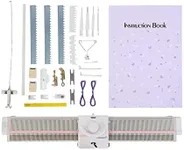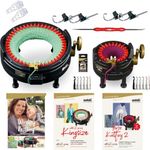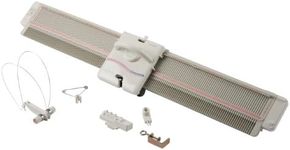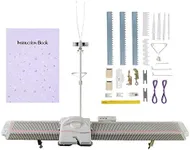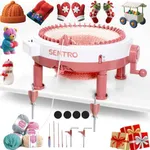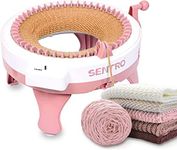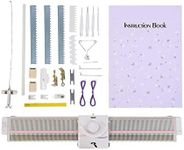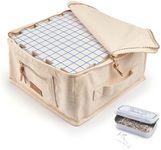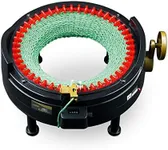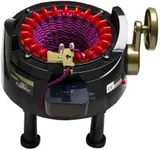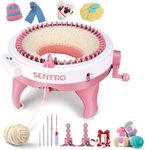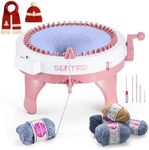Buying Guide for the Best Knitting Machines
Choosing the right knitting machine can greatly enhance your knitting experience, whether you're a beginner or an experienced knitter. The key is to understand your needs and match them with the machine's capabilities. Consider what types of projects you want to create, the yarns you prefer, and how much time you want to spend on your knitting. By focusing on the key specifications, you can find a machine that fits your style and skill level, making your knitting projects more enjoyable and efficient.GaugeGauge refers to the number of stitches per inch that a knitting machine can produce. It's important because it determines the type of yarn you can use and the texture of the finished fabric. Machines are generally categorized into fine, standard, and bulky gauges. Fine gauge machines are suitable for lightweight yarns and delicate fabrics, standard gauge machines work well with medium-weight yarns, and bulky gauge machines are ideal for thick yarns and heavy fabrics. Choose a gauge based on the types of projects you plan to make and the yarns you prefer to work with.
Number of NeedlesThe number of needles on a knitting machine affects the width of the fabric you can knit. More needles mean you can create wider pieces without needing to join panels. Machines with fewer needles are suitable for smaller projects like hats and scarves, while those with more needles are better for larger items like sweaters and blankets. Consider the typical size of your projects when deciding on the number of needles you need.
Pattern CapabilitiesPattern capabilities refer to the machine's ability to create different stitch patterns automatically. This is important for adding variety and complexity to your projects. Some machines come with built-in pattern cards or electronic patterning features, allowing you to easily switch between designs. If you enjoy experimenting with different patterns or want to save time on complex designs, look for a machine with robust pattern capabilities. If you prefer simple designs, a basic machine may suffice.
Manual vs. ElectronicKnitting machines can be manual or electronic. Manual machines require you to operate them by hand, which can be more labor-intensive but also gives you more control over the knitting process. Electronic machines offer automated features that can speed up the knitting process and allow for more complex patterns. If you enjoy the hands-on aspect of knitting and don't mind the extra effort, a manual machine might be right for you. If you prefer convenience and speed, consider an electronic model.
Ease of UseEase of use is crucial, especially for beginners. Some machines are more user-friendly, with straightforward controls and clear instructions, while others may have a steeper learning curve. Consider your experience level and how much time you're willing to invest in learning to use the machine. If you're new to knitting machines, look for one with good reviews for ease of use and comprehensive support materials.
PortabilityPortability refers to how easy it is to move and store the knitting machine. This is important if you have limited space or plan to take your machine to classes or knitting groups. Lighter, more compact machines are easier to transport and store, while larger machines may offer more features but require a dedicated space. Consider your space constraints and how often you plan to move the machine when evaluating portability.
